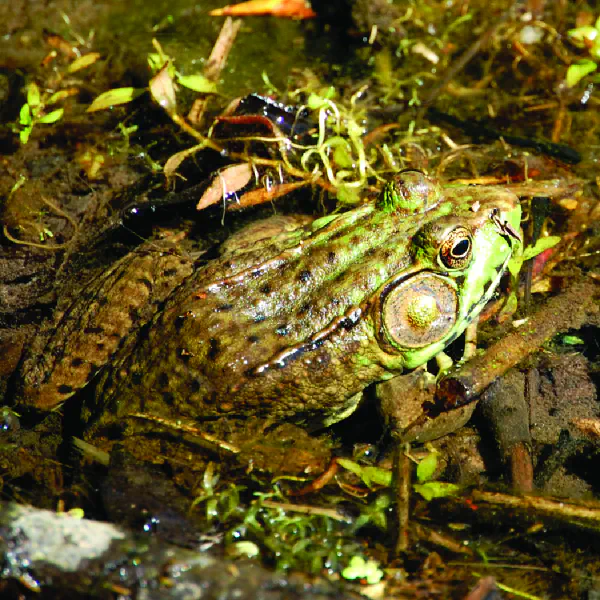Lithobates clamitans
Table of Contents

Scientific Classification
| Kingdom: Animalia |
| Phylum: Chordata |
| Class: Amphibia |
| Order: Anura |
| Family: Ranidae |
| Genus: Lithobates |
| Species: Lithobates clamitans |
Conservation Status
Identifying Features
Green frogs are green or brown colored, with a white belly marked with dark lines or spots. They have prominent ridges that run along the back and male green frogs have an additional brightly yellow-colored throat. They can grow up to 2-4 inches in length and emit a short, loud “thunk” sound like a loose banjo string.
Habitat & Range
Green frogs live close to shallow water near the edges of ponds, streams, and lakes. They are a widespread species and can be found throughout eastern Canada and the United States.
Behavior
Green frogs are more active during the day, but will also hunt at night. They spend their winter months dormant to conserve energy. As adults, they prefer to stay in pools of freshwater, but juveniles can be spotted over wet grasslands or soil.
Life Cycle
Green frogs undergo breeding season during spring and late summer. Females can lay up to thousands of eggs that are attached to submerged vegetation in the water. Most eggs hatch into tadpoles in less than a week’s time and this period of growth can last around two years before transforming into frogs. Male juvenile green frogs do not reach adulthood until 1 year, while females take longer at around 2-3 years.
Featured image by James Dake

